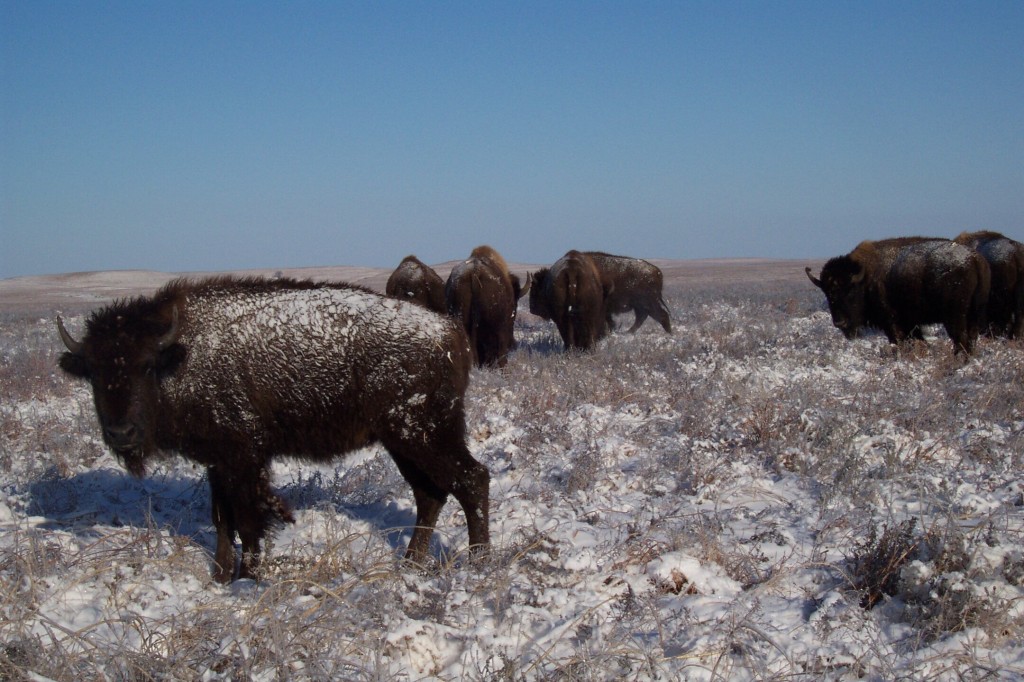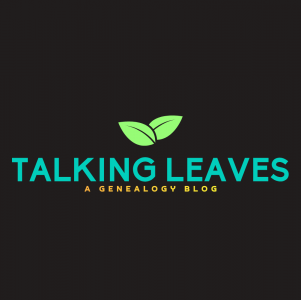52 Ancestors in 52 Weeks – Week 14: Great
Week 14 should be great… because that’s the theme! It could be someone many generations back (like a great-great-great-great-great-grandfather), an ancestor who did something “great,” or someone who was great in some other way. (And remember — there is no “wrong” way to interpret a theme. It’s whatever the prompt makes you want to write about.)

My ancestors were some of the first to call the Great Plains home.
I have previously written about how my maternal grandfather, Clifford Harding (1909-1976) was involved in a federal project to assist farmers in rehabilitating their land in Eastern Kansas following the ravages of the Dust Bowl and soil erosion and exhaustion.
In educating and serving as counsel to struggling farmers, he helped make the great agricultural industry for which the Great Plains, and Kansas in particular, are know and upon which America depends.
But I recently found out that, separately, his wife was also involved in the caretaking of the Great Plains in another great way.
My grandmother, Ina Cathcart Harding (1911-2002) worked, for many years, as a secretary to a professor at the Museum of Natural History on the campus of the University of Kansas in Lawrence. I fondly remember visiting my grandmother at the museum and thinking how neat it was that she worked in such a wonderful place with all of its intriguing displays.
What I did not realize until this week is how notable the professor for whom she worked was in the scientific community.
Dr E Raymond Hall was the author of many books. His The Mammals of Nevada, published in 1946, is still regarded by mammalogists as among the best of state faunal works. Drawing on his graduate thesis is his book American Weasels, published in 1951. His most important work is thought to have been The Mammals of North America, first published in 1959 with Keith R. Kelson and revised in 1981 under Hall’s sole authorship. It is considered to be a faunal work of incomparable quality and magnitude covering any group of organisms anywhere in the world.
Dr. Hall’s vast knowledge and respect from within the scientific community brought many bright scientific minds to Lawrence to work with him, and students of his went on to earn further scientific accolades themselves.
Thanks to an informative email from my mother this week, I learned more details about my grandmother’s work (and how her job was made possible due to a serendipitous change of employment by my grandfather):
As you know she [my grandmother] was an excellent stenographer for several of the Farm Agencies (one in Lawrence where she met her future husband Cliff Harding and also the same assignments in Iola.)
Back then it was the Soil Conservation Service that she served, since she and daddy were not allowed to be hired in the same agency (fraternization rules). He was with the FHA in the office adjacent to her assignment.
Then as often happens, experiences come full circle. As he was organizing the Rural Water Districts from out of the State Office in Topeka, she was hired by a grant associated with the Natural History Museum on the KU campus. Any memories of visiting that museum?
With her secretarial skills she was responsible directly to the Museum Director, Dr. E. Raymond Hall. He was the leader of the committee to save the Tall Grasses of Kansas. Other states were also being granted funds for establishing those preserves. [Preservation of land suitable for] grazing involving the sustaining of bison and other endangered wildlife [as well as preservation of] the tall grasses and other natural vegetation was the purpose of this grant.
She enjoyed so much contributing her expertise to this project. Her boss, Dr. Hall, was an organizer and demanded perfection which she very expertly was able to fulfill for him and his committee. Thus he was very respectful to her thus wishing to “keep on her good side.”
Dr. Hall became Chairman of the Department of Zoology and Director of the Museum of Natural History at the University of Kansas in 1944 and held the post until his retirement in 1967.
His efforts toward the establishment of a Tallgrass Prairie Park–in which my grandmother had assisted–continued after his retirement, however. Besides being an advocate for such a park, he was also instrumental in securing funding.


Dr. E. Raymond Hall, the founder of the movement for a Tallgrass Prairie National Park, talks to a woman at the Second Annual Tallgrass Prairie National Park Conference at a YWCA Camp in the Kansas Flint Hills area at Elmdate, near Emporia. Dr. Hall was Professor Emeritus of Systematics and Ecology at the University of Kansas and an internationally recognized mammalogist. The conference was sponsored by Save the Tallgrass Prairie, Inc., the Sierra Club, and National Audubon Society. September 1974
A highly detailed account of what was a decades-long effort to formally establish such a preserve can be read here.
To summarize, from the very first discussion of such a preserve in the 1920’s, such efforts were fraught with obstacles. Disagreements about how much land should be devoted to such a preserve, the location of said lands, and how those lands might be acquired derailed efforts time and time again. After each failed attempt, the cause was taken up anew with a different slate of legislators proposing new bills during different administrations. Countless feasibility studies were ordered and commissions were convened. Various grass-roots (no pun intended) groups sprung up too: both those advocating for such a park and those in opposition (primarily ranchers, homeowners, and those distrustful of the federal government in general.


Finally, after seventy-plus years, a Tallgrass Prairie Preserve was given the go-ahead. On October 4, 1996, both houses of Congress approved a comprehensive bill which included the Tallgrass Prairie National Preserve as one of sixty park measures.
One month later, President Bill Clinton, having been successfully reelected to a second term, signed the Omnibus Parks and Public Lads Management Act into law at a highly publicized Oval Office ceremony on November 12, 1996.
Dr. Hall (who had passed away in 1986), did not live to see the fruits of his labors on behalf of the Great Plains come to fruition. However, my grandmother was still alive, and–knowing what I know now–I wish I would have asked her what it felt like to finally see Dr. Hall’s and others’ dreams come true!


What a fabulous post! I thoroughly enjoyed learning about your grandparents and looking forward to more!
LikeLiked by 1 person
Thank you for reading, Becky!
LikeLike
Really interesting piece, Susan! As a long-time Kansan (tho I now live in Texas), I appreciate and enjoy the beautiful tallgrass prairie and flint hills. It’s great to learn about someone’s personal connection. Thanks for sharing.
LikeLiked by 1 person
And thank you for reading!
LikeLike
Thank you for reading, Brian!
LikeLike
Fantastic! I enjoy stories about professional women of the past. What would those same women be doing today? It’s great to know the contribution your grandmother made to establishing a lasting legacy. Thanks for sharing.
LikeLiked by 1 person
Barb, thank you so much for reading my post. It’s hard for me to realize sometimes that we are not that many generations removed from a time when very few women were in the workforce–other than the heavy domestic responsibilities that were no doubt taken for granted! Although I grew up with a mother that was in the work force, not all of my friends had that experience. And, now, my daughter knows of very few people her age whose mothers do not hold a job outside the home.
I guess what I’m trying to say is that my grandmother was kind of on the cutting edge! I wish I had told her at the time how proud I am of her, but these are the sorts of realizations that often come later in life.
LikeLike
[…] grandmother’s employment on the KU campus seemingly fostered more of an interest in campus life in general and collegiate sports in […]
LikeLike